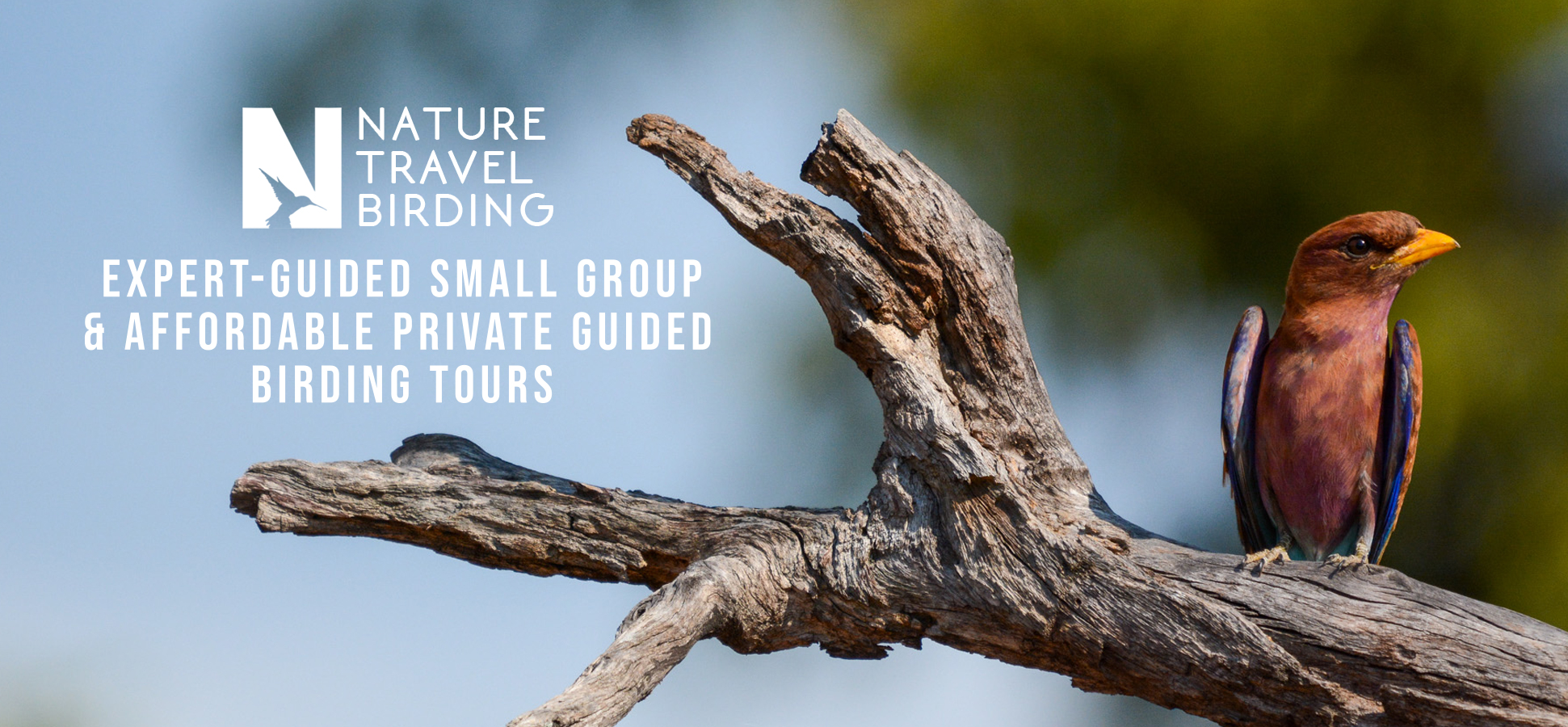
This week’s Bird of the Week here at Nature Travel Birding is the unmistakeable Iberian Magpie Cyanopica cooki, a bird in the crow family that occurs in southwestern and central parts of the Iberian Peninsula, in Spain and Portugal.
This bird was previously treated by scientists as the same species as the more east-occurring Azure-winged Mapie C. cyana, but recent genetic analysis has shown that they are distinct at species level.
The Iberian Magpie is about 35 cm (14 in) long and unmistakable within its range, where its combination of black hood, greyish-brown mantle and blue wings and tail are distinctive. It has a glossy black top to the head and a white throat. The underparts and the back are a light grey-fawn in colour with the wings and the feathers of the long tail are an alluring azure blue.
Iberian Magpies prefer open woodland with grassy clearings, including orchards and olive groves, and sometimes even large gardens. Stands of introduced eucalyptus are particularly favoured as communal roost-sites. They have been recorded locally up to 700 m (2,300 ft) above sea level in foothill gorges, but also occurs down to sea-level, with the largest concentrations in coastal wooded dunes of planted stone pines in southwestern Spain.
They find food as a family group or several groups making flocks of up to 70 birds. Their diet consists mainly of acorns and pine nuts, extensively supplemented by invertebrates, including caterpillars, millipedes, snails and leeches, as well as soft fruits and berries (including grapes, olives, mulberries and cherries), and also human-provided scraps in parks and towns. They are generally shy and very wary, but can become confiding where unmolested.
Iberian Magpies are believed to have monogamous pair-bond, pair-members that keep together within flocks. They are social breeders, forming loose colonies, but there are rarely more than one nest in a single tree. There are usually 6 to 8 eggs that are incubated for 15 days. Interestingly, their nests are very rarely, if ever, parasitized by cuckoos, unlike those of its Asian cousin.
Although most abundant in the southern Spain-Portugal border regions of Extremadura, and said to be increasing in Portugal, it seems that the total population of Iberian Magpies could be declining. Destruction of extensive stands of holm oak trees has been blamed for its disappearance over several areas, and competition with increasing numbers of Eurasian Magpie has also been suggested as a possible reason for local decreases.
Join us on a fantastic Spain birding tour coming up in the European spring in 2020 to see these beautiful near-endemic birds, along with many others. All our trips are small group, expert-guided trips. For more information browse to our website or enquire directly at info@naturetravelbirding.com.
